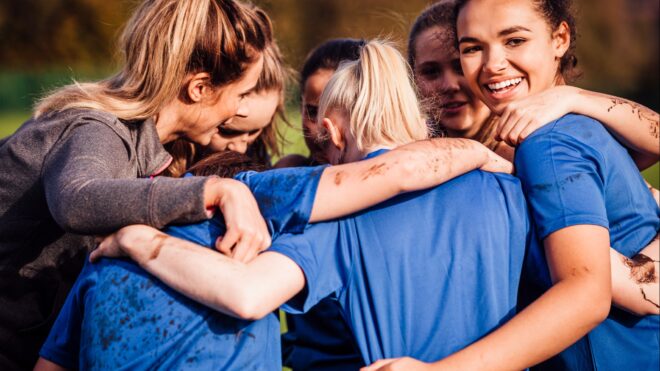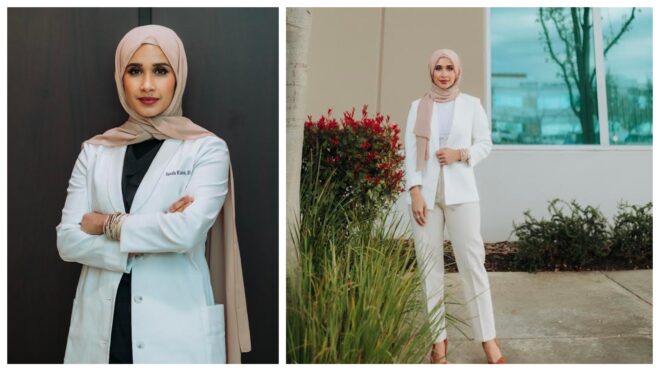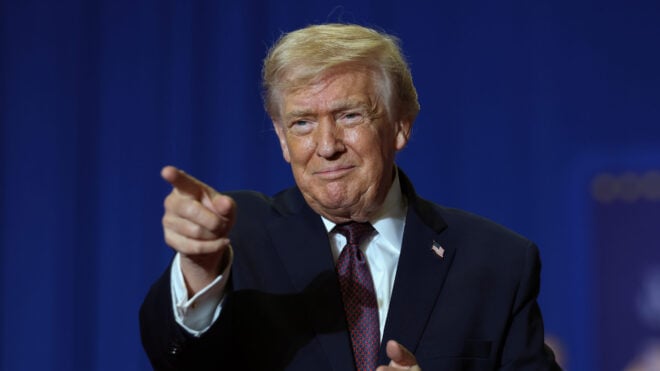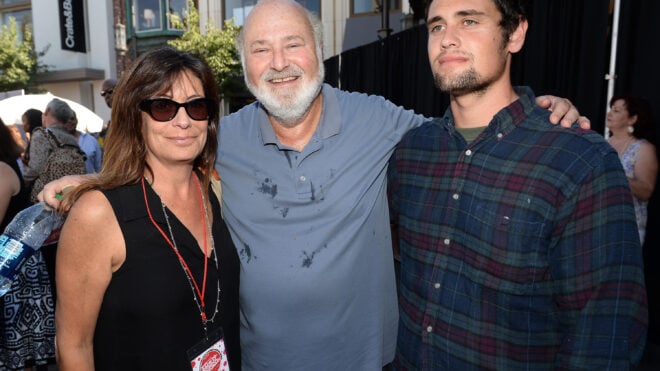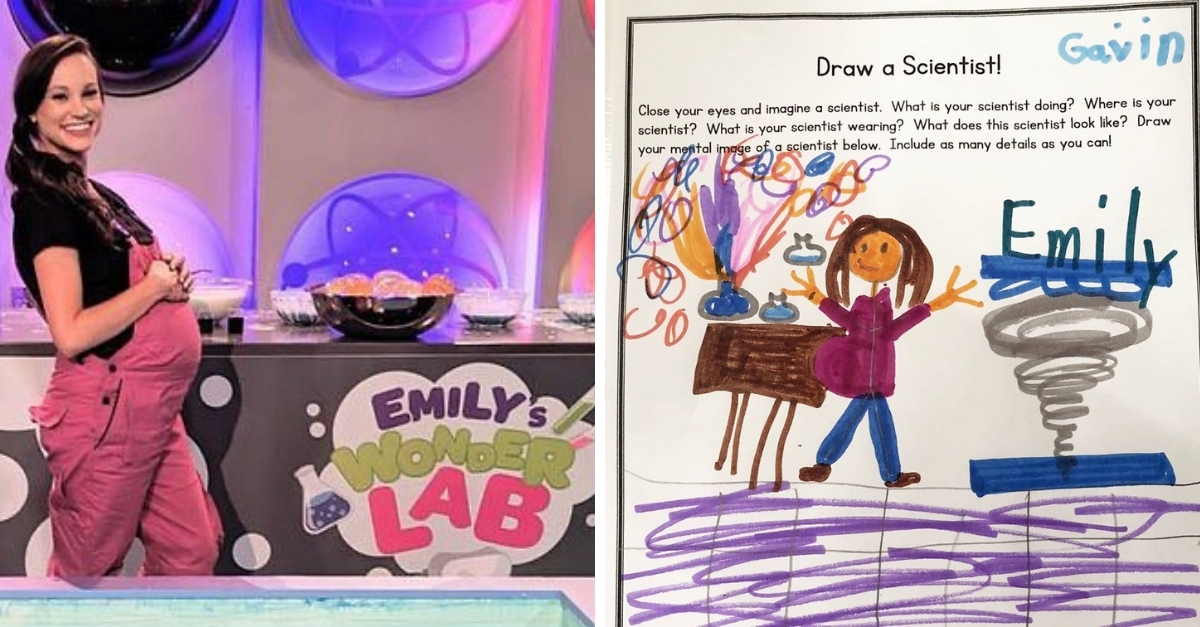
Women can do anything, and Emily Calandrelli is proof.
If you're not already obsessed with Emily, here's her deal. She's the star and host of Netflix's Emily's Wonder Lab. She's a bubbly wonder on-screen who will keep your kids captivated.
Emily's also got the chops to keep them schooled on science. She's an MIT-trained engineer who also works with NASA. She was a featured correspondent on Bill Nye Saves the World and executive producer and host of Xploration Outer Space. Not only will your kids get a real look at the wonderful careers women can have in science, but they'll also see the first pregnant scientist hosting a television show.
Emily recently shared a beautiful work of art by one of her fans. They were instructed to imagine what a scientist looks like, then draw them. The little boy picked Emily and her precious baby bump as his subjects and drew Emily in his lab. She opened up about why that decision is so significant in this day and age.
STEM learning is huge right now, and Netflix is entering the game. The streaming giant's new series, Emily's Wonder Lab, offers short, engaging episodes packed with fascinating facts. It's hosted and executive produced by Emily Calandrelli.
The energetic host doesn't just put a friendly face on science. She also talks the talk as an MIT-trained engineer who also works with NASA. Emily works with kids both on and off the show, giving STEM talks at schools around the country. She's passionate about getting kids involved.
"I think the society that we live in, in general, is just becoming more technologically advanced. And that technology is advancing at such a rapid pace, right, that in order for us to keep up, we need the next generation to be more scientifically literate than we were," she explained in a recent interview with Moms.
"For me, me personally, providing representation to younger girls," she explained about why it's important that she created a science show for kids. "When I was growing up, I didn't have a lot of female role models [in] science to look up to. And that's hard.
"It's just hard to not be able to see yourself in this field that you find interesting. And so being able to provide that representation to younger kids today is really, really meaningful for me."
Emily spoke further to the significance of the show for her in a Facebook post announcing it was streaming.
"For many years I pitched science shows to large science networks and was unsuccessful. I would receive the feedback that 'the majority of our audience is male, so we just don't know if they'd relate to a female host,'" she wrote.
"But last year, Netflix picked up our science show, Emily's Wonder Lab. I filmed the entire thing 9 months pregnant. So there is now a female-led science show on the biggest streaming platform in the world hosted by a pregnant woman – available worldwide.
"I'm just … so incredibly proud that my daughter will be able to watch this someday. When I was studying to become an engineer, I was one of 2 or 3 women in classrooms of 50 men. I'm hoping shows like this help change that demographic for her generation."
Emily demonstrated the power of her being a public figure has already had in another recent post. It involved a drawing tweeted at her by a fan's parent, singing her praises:
"My 8yr-old-son had some homework this weekend. He had to draw what he imagines a scientist looks like. So of course he drew Emily from Emily’s Wonder Lab! He and his 5-yr-old sister have been watching it a lot! Great show@TheSpaceGal. They want more!!"
Emily shared the photo on her own accounts, along with some illuminating backstory.
"The Draw a Scientist Test was first conducted in 1983 in order to study when children learn about stereotypes about scientists," she shared.
"In the original study of nearly 5,000 kids – only 28 of the girls and no boys drew female scientists. That's about 0.5% of all the drawings."
"Over the years, this study has been repeated 80+ times with over 20,000 students. Gradually, that percentage got better, but it was mostly driven by girls starting to draw female scientists," she continued.
"Only 1.2% of girls drew scientists as female in the original 1983 study. That rose to 58 percent by 2016. But boys still draw male scientists 9 times out of 10."
"@minnesota.rain sent me this picture on Twitter. Their son, Gavin, was asked to draw a scientist. And this is what he drew. (Please note the inclusion of the bump !) This…makes me feel lots of feelings.
"We hear it so often that it starts to lose meaning – but representation matters. It's incredibly powerful and it changes the way we think.
"Here's hoping this Draw a Scientist test continues to reveal a more diverse assumption of what a scientist can look like as the years go on. #EmilysWonderLab."
Data recorded in 2015 found that women made up 48% of biological, agricultural, and environmental life scientists, according to the National Science Foundation. That's progress from the 34% who did so in 1993. It's our job to keep the upward trend going by supporting women like Emily who show our girls that science careers are within their reach.

